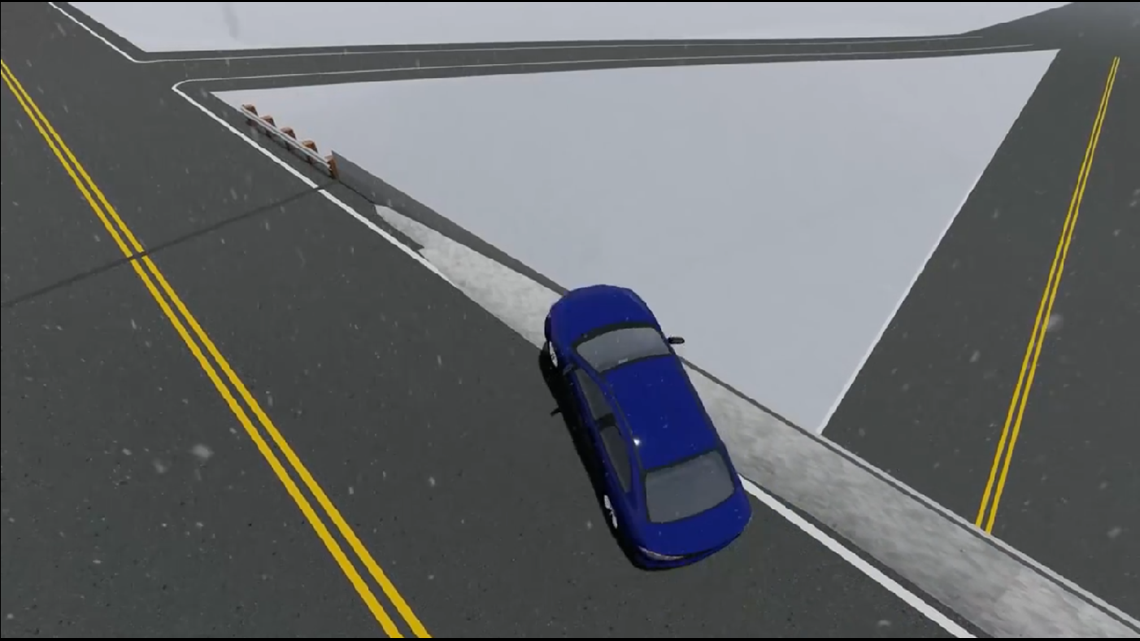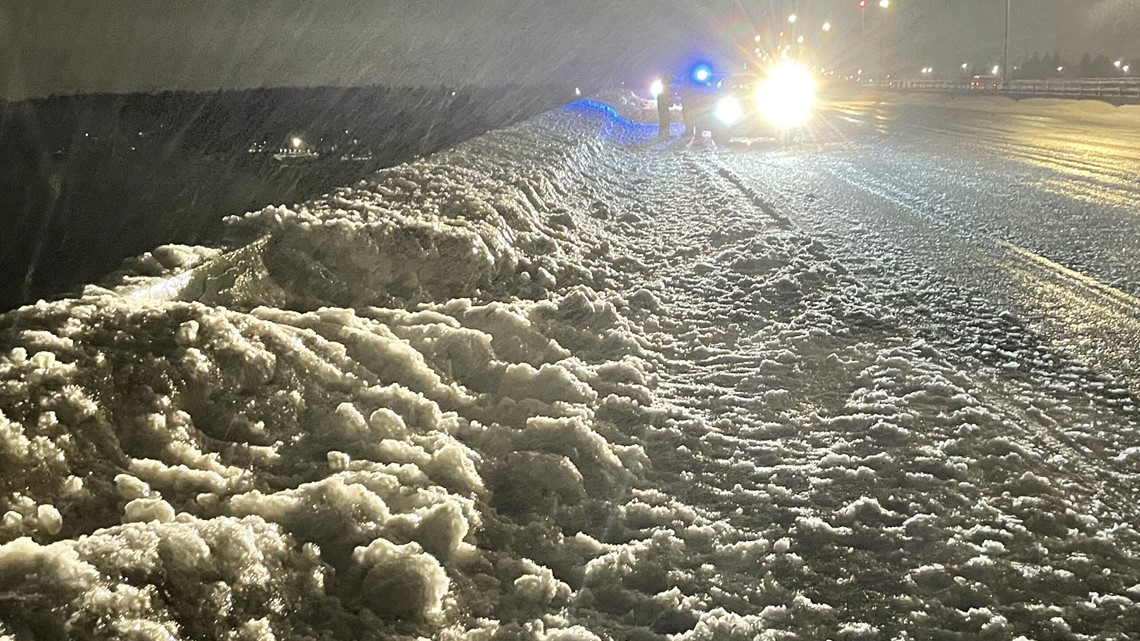PORTLAND, Ore. — It seemed like a freak accident during one of the biggest winter storms to hit Portland in years. A driver lost control on an icy bridge and plunged into the Columbia River below.
After a prolonged search, divers eventually found the wreckage three days later. Police identified the driver who died in the February crash as Antonio Amaro Lopez of Portland.
While the Oregon Department of Transportation determined “speed and weather conditions were the primary factors in this tragic crash”— a close examination of the accident by KGW, based on police reports, internal documents and interviews found the government agency responsible for maintaining the I-205 Glenn Jackson bridge created conditions that may have contributed to the crash.
“They (ODOT) said it was caused by driver’s speed. I totally disagree. This was not caused by driver’s speed,” explained Larry Levine, an engineer who specializes in accident investigation and reconstruction. “This was entirely caused by improper plowing and maintenance of this bridge.”
Levine, who reviewed our findings, reports and photos of the scene believes snowplows threw snow and ice onto the shoulder and against the jersey barrier creating an icy ramp— essentially defeating the one and only safety feature preventing a vehicle from going off the bridge.
“Everything they did made this bridge unsafe,” said Levine.
On the evening of February 14, Amaro Lopez started driving home from his family’s restaurant in Hazel Dell. Shortly after he left work—drivers reported a maroon SUV lose control, hit an embankment and go over the side of the Glenn Jackson bridge.
“He was a loving, kind man,” explained one of his daughters, Abi Amaro.


Amaro Lopez is remembered as a strong father figure to his immediate family and extended family. He left behind a wife of 35 years, three daughters and grandchildren.
“We’re still trying to figure out our structure at home. He definitely played a big role,” said Amaro.
The 57-year-old loved the outdoors and watching soccer. He was passionate about the restaurant business, Amaro’s Table that he built with his brothers, although nothing was more important than family.
“I just think the love that he gave, is something that we’ll have to learn to live without,” said Amaro, his daughter.
Video of the crash scene taken by Portland police and obtained through a public records request showed the icy conditions on the I-205 Glenn Jackson bridge southbound between Oregon and Washington on February 14.
Internal ODOT records indicated road crews applied liquid chemical deicer that evening.
“There was evidence of recent snowplow activity on the bridge,” wrote Portland Police officer Garrett Dow in an incident report. Dow is a crash reconstructionist with the police bureau’s traffic division.
“The snowplow activity had moved snow to the east and west shoulders. The snowbanks reached up to the top of the barriers,” explained Dow.
A series of photos taken by Dow and another crash investigator showed the snowbanks.


For decades, federal highway safety officials have warned about the risk of creating icy snow ramps on the side of plowed bridges.
There have been numerous examples around the country where vehicles went up a snowbank, over a concrete barrier.
In February, a driver in Milwaukee, Wisconsin survived a 70-foot plunge from a snow-covered off ramp. The fall was captured by traffic cameras operated by the Wisconsin Department of Transportation.
That same month, another driver in Chicago careened over a snow-covered barrier and plummeted onto the roadway below. He survived the February crash.
A training video from the Iowa Department of Transportation instructs snowplow operators that snow should be cleared from the shoulder to avoid snow piling up along the barrier.


“This is important since snow piles along the barrier can form a ramp which could facilitate a vehicle going up and over the barrier and off the bridge,” explained the 2020 Iowa DOT training video.
Unlike some other states and local governments, Oregon DOT does not provide specific guidance on how to avoid creating snow ramps on bridges, based on the documents it provided.
The Oregon Department of Transportation declined repeated requests for an on-camera interview.
“Our reports show that we followed our standard winter maintenance practices. We’re uncertain why this person lost control of his vehicle, crossed four lanes of traffic and struck the barrier before going over the bridge,” the state agency explained in a written statement.
The Portland police incident report described how the 55 mile per hour speed limit on the bridge had been reduced to 35 miles per hour. Investigators believe Amaro Lopez was going too fast for the weather and road conditions.
A witness told police Amaro Lopez was driving slower than others, estimating his speed at less than 50 miles per hour, when he hit a patch of ice, over-corrected and then hit the snowbank vaulting over the bridge’s 32-inch-high concrete barrier.


The witness told investigators the snow plowed along the edge of the bridge had “in a sense created a ramp.”
Photos of the scene show the 10-to-12-foot shoulder completely covered in snow. And that was a fatal error—explained a traffic safety expert.


“They should have been able to toss it over the side without any special equipment or anything. They’re just doing it wrong,” explained Larry Levine.
Levine, who has reviewed similar crashes and worked with transportation agencies in New York said at this speed and this angle— if the snow and ice had been cleared from the shoulder the vehicle would have been redirected back onto the bridge.
“It doesn’t take a brainiac to figure out that what they did made this bridge unsafe and basically caused this accident,” said Levine.
If you have a suggestion for an investigation, or want to blow the whistle on fraud or government waste, email CallKyle@kgw.com.

